Most feline fanciers have encountered catnip at some point. Catnip shows up in cat toys and cardboard scratchers, and even in spray form to refresh bedding or scratching posts. If you have a green thumb, you might even grow it in your garden. And as soon as your cat catches a whiff? Bam! You have a different kitty. They’re rolling all over the floor, doing backflips, and performing kitty concertos. It looks like they’ve lost their minds. All from a few crushed leaves. But what are the real effects of catnip on cats? What drives the silliness you’re seeing? (Or NOT seeing – that’s possible, too) If you have catnip questions, we have answers.

Catnip
Nepeta cataria belongs to the mint family. It’s one of over 250 members of that family, actually. (Didn’t know there were that many mints, did you?) The herb originated in Europe, Asia, and Africa, and it came over to North America with the settlers. And while its official classification is an herb, it turns into a weed once you pop it into the ground. The plant happily takes over any planted bed.
The square stem puts off triangular leaves with a toothed edge. In the latter half of the spring through autumn, you’ll see small pink or white flowers with tiny spots of purple. Some people grow catnip for its herbal properties (we’ll get to that in a minute). Others keep nice patches for their feline companions. And some people enjoy the look of the plant.
Kitty Insanity – Or How My Cats Lost Their Catnip Privileges
This story may sound familiar to you. It’s an example of the effects of catnip and the absolute insanity it can provoke in cats. People often joke that catnip causes cats to “get high” or even become addicted. And, I admit, this plays into those descriptors.
A friend of mine grew and dried organic catnip. She brought some into work for me to give my cats. I worked overnight at the time, and I felt guilty over my schedule. So I figured it’d be a nice treat for my kiddos. The Ziploc went into my tote bag.
If you’ve worked the graveyard shift, you know it takes a toll on you. I hit the door, tossed the bag on the back of a chair, and promptly went to sleep. A few hours later, I woke up to pure madness.
Catnip EVERYWHERE!
Those buggers got my tote bag off the chair, pulled out the Ziploc, tore it open, and proceeded to scatter the catnip from one end of the living room to the other. It looked like green snow.
And when I took out the vacuum to clean up the mess, they scrambled to scoop up the catnip. My little fraidy-cats who hated the vacuum! They looked like fluffy addicts trying to pick up their stash.
That was the last time catnip was allowed in my house. (Eleven years ago, in case you were wondering)
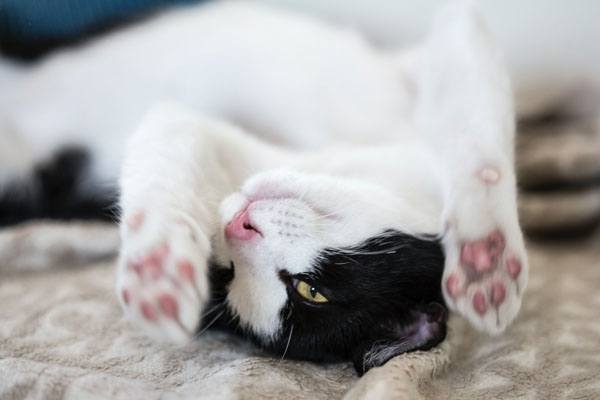
The Effects of Catnip
What causes such reactions in cats?
Within the stems and leaves of catnip plants, you’ll find an oil known as nepetalactone. The nepetalactone is responsible for the effects of catnip on cats. How? Brace yourselves, because we’re going to get into a little science here.
The process works in the kitty brain:
- Your cat smells the nepetalactone.
- The oil binds to receptors in the nasal cavities, alerting nerve cells.
- Those cells trigger a cascade in the olfactory bulb (the scent center).
- Nerves then go to two regions in the brain: the amygdala and the hypothalamus.
- The amygdala controls emotional and behavioral responses.
- The hypothalamus coordinates with the pituitary gland to coordinate a “sexual response.”
Basically, what happens is nepetalactone causes your kitty to react like a female cat in heat. It behaves like an artificial cat pheromone.
Common Reactions to Catnip
For the first ten minutes, while the oil triggers the response in your cat’s brain, you’ll see these common reactions:
- Dilation of the pupils
- Rolling on the catnip
- Rubbing their shoulders into the floor
- Flips and other acrobatics
- Running in mad circles
- Vocalizations
If you’ve ever seen a cat in heat, their behaviors are similar to the effects of catnip (though they last longer). After ten minutes, though, the brain reaches saturation, and your cat becomes “immune” to catnip. So you’ll see them settle down. The “reset” period is around 30 minutes before they can start up again.
People often compare the effects of catnip in cats to a “high.” While felines get excited and playful, acting like goofballs, there’s no scientific proof that nepetalactone behaves like cannabis, marijuana, or cocaine. Your cat isn’t “getting high” or showing any other narcotic response. It’s a different kind of reaction – even if people mistake the crazy behavior.
Do the Effects of Catnip Apply to All Cats?
You’ve watched all of the catnip videos on Instagram and YouTube. So you ran out and got some catnip for your feline. And nothing happened. Why?
As it turns out, the effects of catnip aren’t 100%.
You’re dealing with the pituitary gland, so kittens need to reach sexual maturity before catnip starts to affect them. Until they hit six-months-old, catnip doesn’t provoke a reaction.
And the effects of catnip are hereditary. Some felines get the wiring to dance around and look foolish, while others don’t. About 50-80% of cats DON’T react to catnip at all. You may have one. (Though I’m sure they appreciated your gesture)
Finally, a 2017 study determined that some cats adopt a different effect of catnip. “They assume what’s called a kind of sphinx position, and they vocalize less,” says Dr. Bruce Kornreich, the Associate Director for Education and Outreach at the Feline Health Center at Cornell University College of Veterinary Medicine. Additional compounds in the catnip block signals in the brain, resulting in calm, “loaf” kitties.
Eating Catnip
Most cats remain content to roll around on their catnip stash. However, some lick and consume the crushed leaves. And people DO feed catnip to their felines. Can you expect the same effects of catnip if it’s consumed?
Actually, no. Because the nepetalactone bypasses the olfactory bulb, the nerve signals follow a different path. When cats eat catnip, it causes a calming effect (similar to the 2017 study).
You need to go easy on amounts, though. Catnip overdoses result in potentially severe health problems:
- Vomiting
- Diarrhea
- Dizziness
- Difficulty walking
If you decide to administer catnip to your kitty, consult your veterinarian for proper dosing. And make sure they know if you’re using fresh or dried. (Fresh herbs are more potent)
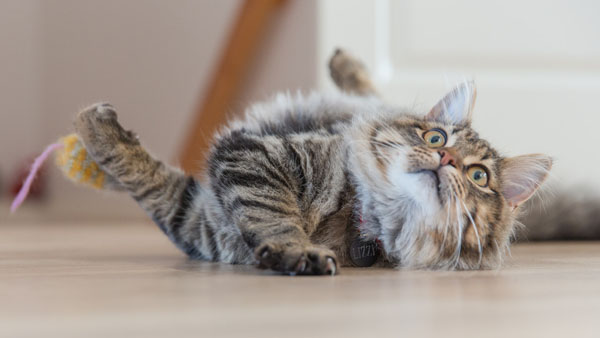
Humans and Effects of Catnip
People cultivated and maintained crops of catnip before social media turned the herb into a star. But not because we experience a similar euphoric effect. As a matter of fact, if you inhale crushed catnip, you won’t experience anything. This is because our brains lack the wiring of our feline friends. But we CAN enjoy other benefits from the catnip plant.
Alternative medicine focuses on the calming effects of catnip. Brewed in tisanes (essentially, a tea minus the tea leaves), catnip behaves similar to chamomile. Many herbalists use the herb to help with:
- Migraines
- Cramps
- Nervousness
- Inflammation (they make a paste to apply to joints and injuries)
Concentrated catnip oil also makes an effective mosquito repellent – for a few hours, anyway. (At least it smells better than some of the chemicals out there!)
Kitty Crazies
People get a kick out of the effects of catnip on cats. For a few minutes, your feline loses control and turns into a complete nut. Then they crash and enjoy a nap so they can repeat the antics all over again. Or they assume the sphinx pose and go into a kitty meditation. Either is possible when you sprinkle catnip on the floor or introduce a catnip toy. Or you may have one of those cats lacking the hereditary programming to fall for catnip’s charms. It’s all a genetic roll of the dice.
They aren’t “high,” but they enjoy a euphoric sensation, courtesy of the neurotransmitters in their brains. One they won’t get addicted to. But if you’re sneaking catnip into your kitty’s food, mind the dosing. You don’t want to cause health problems.
Not too shabby for a plant most people consider an obnoxious weed!




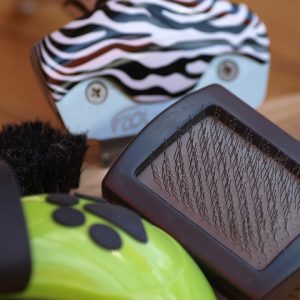
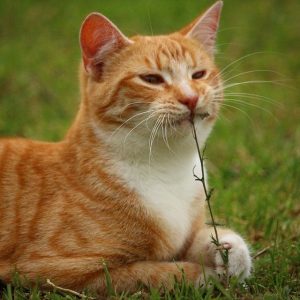




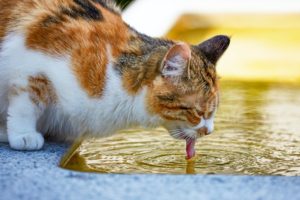


No comment yet, add your voice below!